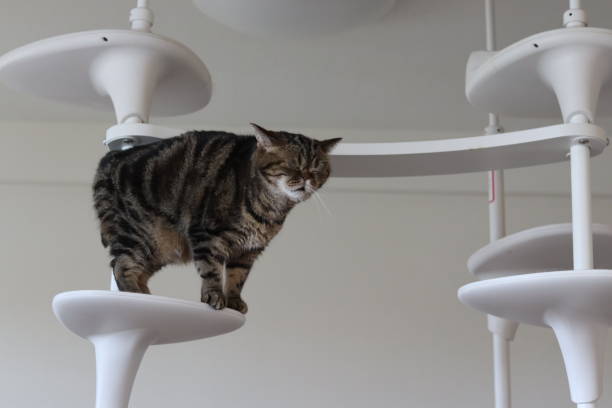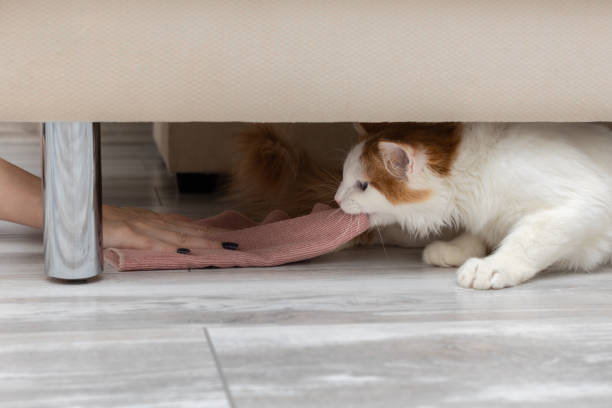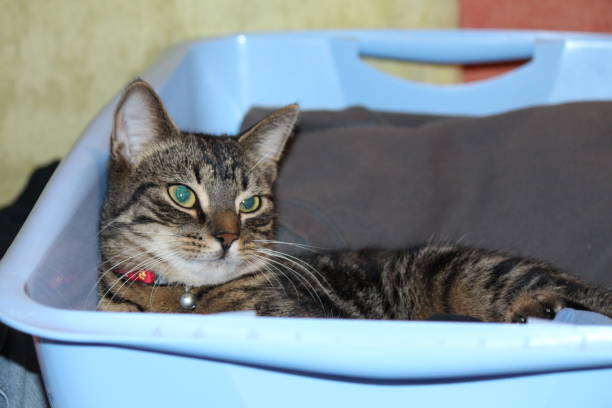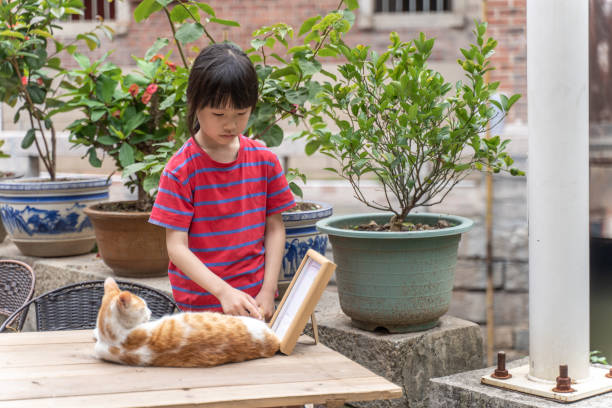Creating a Cat-Friendly Environment
Creating a cat-friendly environment is essential for your pet’s wellbeing. This refers to all the objects and provisions that make up their home environment and satisfies their natural needs for security, play, rest, food and water.
Providing cats with plenty of these ‘resources’ can help reduce stress and behavioral problems. These include:
Create High Perches
Cats love vantage points where they can see what is going on around them. Being up high also helps them feel safer, as they can escape people or dogs that are causing them stress. If they want to toilet, they can easily retreat to an elevated area within the garden (provided it is large enough and containing woodchips or another suitable type of substrate).
Having access to these vertical spaces can also be beneficial for cats that are prone to hiding because they give them somewhere quiet where they can relax. Many of these cat perches can also be scented with feline pheromones, which will further help to make them more appealing and comforting.

Providing perches like these in your home can be a great way to enrich your cat’s environment, and they are easy to install. You can find a range of products on the market that are designed specifically to be mounted on your walls, and some even come with pre-drilled holes and simple instructions, making them an ideal option for homeowners who want to make their home more feline friendly.
Give Your Cat a Safe Place to Hide
Cats need a safe place to hide if they feel threatened, either indoors or outdoors. Often cats will find a safe hiding spot such as the bottom of a cupboard or in a gap under furniture. Cats may also enjoy teepee style beds, a box tipped on its side or even a towel draped over an armchair.
Noises that make you jump or sudden movements can be a big source of stress for a cat, so giving them places to hide away in can help them calm down and feel safe again. They are usually happy to come out of hiding once the situation feels less threatening, or if they need to go to the toilet, eat or sleep.

Don’t try to coax them out of their hiding place too quickly, as this will only cause them stress. Leaving them alone to come out when they are ready will help them to become more confident in your home. When they do decide to leave their hiding spot, ensure that all of their essentials are close by, such as a quiet area and their food, water and litter tray.
Create a Place for Play
Your cat needs an interesting home environment to stay healthy and engaged. Cats should be able to pursue their natural instincts – hunting and play time helps them to bond with their people and exercise their muscles. However, it’s important to ensure that any interactive toys are appropriate for the type of activity your cat prefers. Using feather wand toys to play with your cat is often very popular with many cats, stimulating their hunting instincts and providing them with plenty of physical exercise.
Provide your cat with a space for play and to relax in, whether that be a dedicated room or even just a corner of the living room. Make sure the area is a draught-free, quiet place and that they can access their litter tray easily (keeping it separate from food and water).
Providing hiding spaces, such as a cat cave or covered bed, can be a great way for your cat to escape, recharge and feel safe. Add olfactory stimulation, such as scent marks or sprays that smell like cinnamon or cardamom to encourage olfactory exploration.
Keep the Litter Tray Clean
A cat-friendly environment includes a regular, easy to clean litter tray. The trays should be large enough for a cat to enter and out of reach of small children and pets, ideally not visible from the house entrance. A mat can also be used to catch any faeces and urine from outside the litter box. Cats prefer fine sand-like litter that mimics the substrate they instinctively use as kittens. It is best not to change the type of litter as this can confuse them and increase their toilet time, reducing their general comfort. Litter trays should be cleaned regularly, removing faeces and urine soiled litter at least once a day.

It is important for cats to have quiet areas that can be used for rest or sleep. This is especially important if your cat is a solitary cat, or has limited outdoor access due to health or safety reasons. You can provide your cat with a variety of quiet spaces by using cat trees, cat furniture and indoor catios or even just creating a secluded area in the home for them to hide in.
Give Your Cat Freedom
Cats that can go outside have a better quality of life. They get to engage in more of their natural behaviours like climbing, exploring and roaming their territory. They are less likely to suffer from internal and external parasites too.
However, keeping cats completely indoors is not without its issues, and they tend to become bored and frustrated as a result. They may also develop anxiety and depression. It is important for pet parents to recognise their cats’ instinctive needs and provide them with outlets that will allow them to express these behaviours. Some examples include padded perches in the home, toys that mimic prey and ways to exercise their hunting skills with food puzzles.
It is also important to make sure that your garden is cat-friendly before allowing your cat outside for the first time. Choose a quiet day when there aren’t many people going in and out of the house or garden and let them explore their new surroundings slowly. Make sure you are available to offer reassurance and help them return inside if necessary.


Comments are closed.